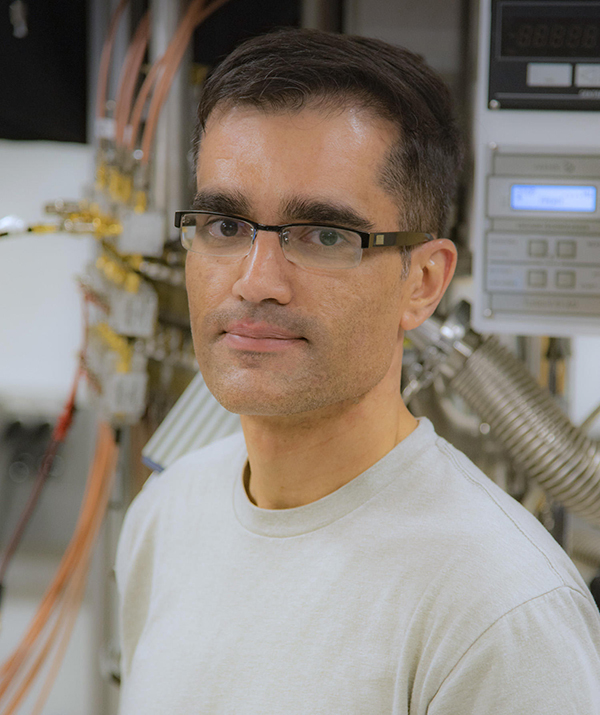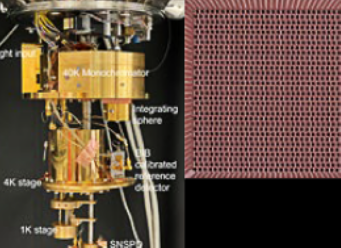
Varun Verma
Physicist, National Institute of Standards and Technology
Education
- Ph.D. (2009) • Electrical Engineering University of Illinois Urbana-Champaign
- M.S. (2005) • Electrical Engineering • University of Illinois Urbana-Champaign
- B.S. (2004) • Computer Engineering & Astrophysics University of Illinois Urbana-Champaign
Current Position
- Physicist at the National Institute of Standards and Technology, Applied Physics Division, Boulder, Colorado
- Managing a small group of three postdocs, developing superconducting nanowire single-photon detectors (SNSPDs) for applications in the mid-infrared for astronomy, astrobiology, and astrochemistry. Also supporting continued development of telecom-wavelength SNSPDs for quantum computing/comm.

The image shows a cryostat designed for calibrating the efficiency of superconducting nanowire single-photon detectors in the mid-infrared, and an optical micrograph of a kilopixel array of such detectors.
Technology Interests
- Single photon detectors for astrophysics, quantum computing, and quantum communications.
- Integration of SNSPDs with ion traps for scalable quantum computing
- Novel readout techniques using Josephson Junction and CMOS-based circuits
- Efficiency calibration and measurement, particularly in the mid-infrared
- Deep space optical communications at NASA/JPL
- Aviation and space exploration
Goals and Aspirations
- Broadening the use of SNSPDs and other superconducting detectors from strictly quantum applications to astrophysics, astrochemistry, and biology.
- Being an effective mentor to new students and postdocs, setting them up for a successful career.
- Developing closer relationships with NASA and commercial partners.
- Pushing the limits of detector performance and technologies
Superconducting nanowire single-photon detectors (SNSPDs)
- High-efficiency single-photon counting from the UV to 18-micron wavelength
- Zero read noise, ultra-low dark counts (less than 1 count per day)


























